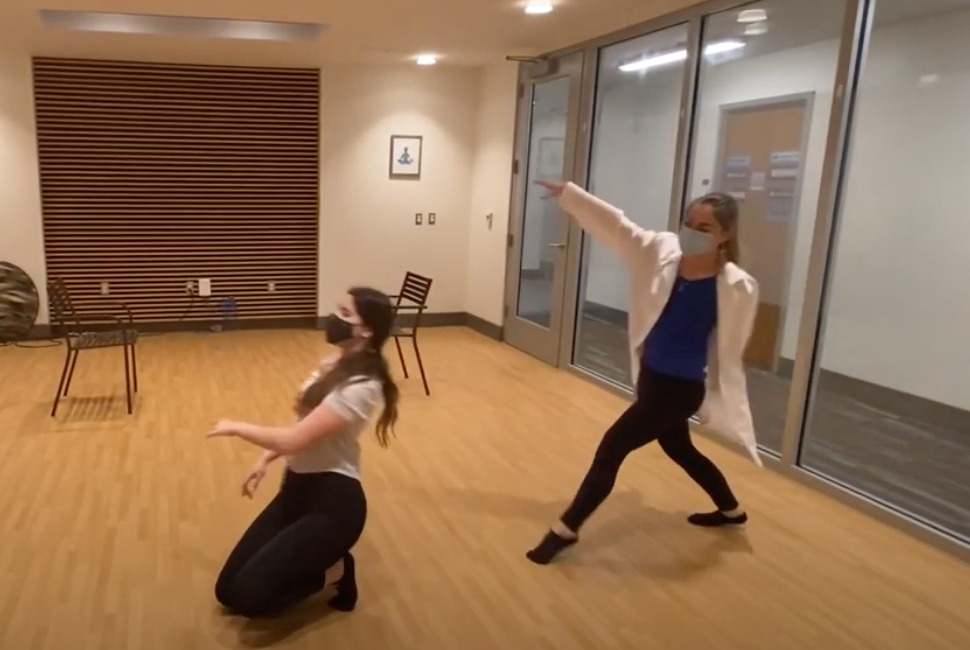“The Art of Patient-Provider Relationships”
Medical Ethics Final Project
As part of a final project for a class on Medical Ethics within Duke’s Focus program, this dance focuses on the patient-provider relationship and the difference between a “good” and “bad” patient-provider interaction. It aimed to portray several crucial aspects of the patient-provider relationship that were explored in class such as focusing on physical characteristics of the interaction: “sitting on the same side of the table”, body orientations, level, whether a doctor sits or stands, as well the concepts of partnership, respect, understanding, transparency, miscommunication and power.
A moment to focus on: synchronised glances to watches from both the patient and doctor in the “bad” relationships acknowledges one of the medical system’s greatest weaknesses, where physicians are always pressed for time. This means physicians are often stressed and patients feel neglected. Through our dance, we focused on what it feels like to be waiting as a patient. When a patient has to wait, it creates an imbalance right from the beginning of the interaction and leaves the patient vulnerable to feeling neglected. This factor is through no physicians’ fault, but our “good” interaction demonstrates the power that taking a moment to “side down beside” the patient has.
This dance was an act of imagination from two future hopeful physicians. The frustration of playing a neglected patient and the trials of portraying ageing allowed us to appreciate the points we had raised in class discussions in a physical way, combining a physical feeling of tightness and loss of control with the patient’s need for understanding and respect. This learning is something that delving into facts and figures for a research paper cannot provide.
Through the process, we realized that dance is a good metaphor for a successful patient-provider interaction where the physician must dance to the “rhythm” of their patient, (their values, emotional state, lifestyle, religious beliefs, etc.). With different patients come different rhythms. Hopefully, our audience will find watching the dance as rewarding as it was creating it.
The songs used were Broken and Sit Down Beside Me by Patrick Watson.
Dancers and Choreographers: Anna de Pourtales and Amy Labrador

